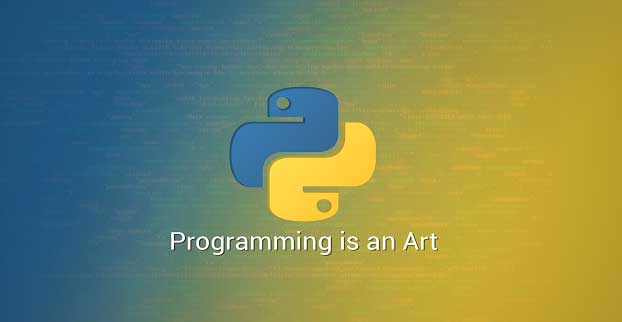据说Python之父-Guido Van Rossum打算让CPython更快,速度直接翻五倍,这是实实在在的好消息。
Python一直以来被诟病速度慢,影响开发效率,希望这次Guido老爷子能帮python打一场漂亮的翻身仗。
这篇文章不准备介绍Python速度如何,而是给大家带来一些常用且实用的Python代码实例,几乎是开发者必备的知识点。
1、合并两个字典
Python3.5之后,合并字典变得容易起来。我们可以通过 ** 符号解压字典,并将多个字典传入 {} 中,实现合并。
def Merge(dict1, dict2):
res = {**dict1, **dict2}
return res
# 两个字典
dict1 = {"name": "Joy", "age": 25}
dict2 = {"name": "Joy", "city": "New York"}
dict3 = Merge(dict1, dict2)
print(dict3)
- 1.
- 2.
- 3.
- 4.
- 5.
- 6.
- 7.
- 8.
- 9.
输出:
{'name': 'Joy', 'age': 25, 'city': 'New York'}
- 1.
2、链式比较
python有链式比较的机制,在一行里支持多种运算符比较。相当于拆分多个逻辑表达式,再进行逻辑与操作。
a = 5
print(2 < a < 8)
print(1 == a < 3)
- 1.
- 2.
- 3.
- 4.
输出:
True
False
- 1.
- 2.
3、重复打印字符串
将一个字符串重复打印多次,一般使用循环实现,但有更简易的方式可以实现。
n = 5
string = "Hello!"
print(string * n)
- 1.
- 2.
- 3.
- 4.
输出:
Hello!Hello!Hello!Hello!Hello!
- 1.
4、检查文件是否存在
我们知道Python有专门处理系统交互的模块-os,它可以处理文件的各种增删改查操作。
那如何检查一个文件是否存在呢?os模块可以轻松实现。
from os import path
def check_for_file():
print("Does file exist:", path.exists("data.csv"))
if __name__=="__main__":
check_for_file()
- 1.
- 2.
- 3.
- 4.
- 5.
- 6.
- 7.
输出:
Does file exist: False
- 1.
5、检索列表最后一个元素
在使用列表的时候,有时会需要取最后一个元素,有下面几种方式可以实现。
my_list = ['banana', 'apple', 'orange', 'pineapple']
#索引方法
last_element = my_list[-1]
#pop方法
last_element = my_list.pop()
- 1.
- 2.
- 3.
- 4.
- 5.
- 6.
- 7.
输出:
'pineapple'
- 1.
6、列表推导式
列表推导式是for循环的简易形式,可以在一行代码里创建一个新列表,同时能通过if语句进行判断筛选
def get_vowels(string):
return [vowel for vowel in string if vowel in 'aeiou']
print("Vowels are:", get_vowels('This is some random string'))
- 1.
- 2.
- 3.
- 4.
输出:
Vowels are: ['i', 'i', 'o', 'e', 'a', 'o', 'i']
- 1.
7、计算代码执行时间
python中time模块提供了时间处理相关的各种函数方法,我们可以使用它来计算代码执行的时间。
import time
start_time = time.time()
total = 0
for i in range(10):
total += i
print("Sum:", total)
end_time = time.time()
time_taken = end_time - start_time
print("Time: ", time_taken)
- 1.
- 2.
- 3.
- 4.
- 5.
- 6.
- 7.
- 8.
- 9.
- 10.
- 11.
- 12.
输出:
Sum: 45
Time: 0.0009975433349609375
- 1.
- 2.
8、查找出现次数最多的元素
使用max方法找出列表中出现次数最多的元素。
def most_frequent(list):
return max(set(list), key=list.count)
mylist = [1,1,2,3,4,5,6,6,2,2]
print("出现次数最多的元素是:", most_frequent(mylist))
- 1.
- 2.
- 3.
- 4.
- 5.
输出:
出现次数最多的元素是: 2- 1.
9、将两个列表转换为字典
有两个列表,将列表A里的元素作为键,将列表B里的对应元素作为值,组成一个字典。
def list_to_dictionary(keys, values):
return dict(zip(keys, values))
list1 = [1, 2, 3]
list2 = ['one', 'two', 'three']
print(list_to_dictionary(list1, list2))
- 1.
- 2.
- 3.
- 4.
- 5.
- 6.
- 7.
输出:
{1: 'one', 2: 'two', 3: 'three'}
- 1.
10、异常处理
Python提供了try...except...finally的方式来处理代码异常,当然还有其他组合的方式。
a, b = 1,0
try:
print(a/b)
except ZeroDivisionError:
print("Can not divide by zero")
finally:
print("Executing finally block")
- 1.
- 2.
- 3.
- 4.
- 5.
- 6.
- 7.
- 8.
输出:
Can not divide by zero
Executing finally block
- 1.
- 2.
11、反转字符串
使用切片操作对字符串进行反转,这是比较直接有效的方式。 这也可以用来检测回文数。
str = "Hello World"
print("反转后字符串是:", str[::-1])
- 1.
- 2.
- 3.
输出:
反转后字符串是: dlroW olleH
- 1.
12、字符串列表组成单个字符串
使用join方法将字符串列表组成单个字符串。
list = ["Hello", "world", "Ok", "Bye!"]
combined_string = " ".join(list)
print(combined_string)
- 1.
- 2.
- 3.
- 4.
输出:
Hello world Ok Bye!
- 1.
13、返回字典缺失键的默认值
字典中的get方法用于返回指定键的值,如果键不在字典中返回默认值 None 或者设置的默认值。
dict = {1:'one', 2:'two', 4:'four'}
#returning three as default value
print(dict.get(3, 'three'))
print("原始字典:", dict)
- 1.
- 2.
- 3.
- 4.
- 5.
- 6.
输出:
three
原始字典: {1: 'one', 2: 'two', 4: 'four'}
- 1.
- 2.
14、交换两个变量的值
在不使用临时变量的前提下,交换两个变量的值。
a, b = 5, 10
# 方法1
a, b = b, a
# 方法2
def swap(a,b):
return b,a
swap(a,b)
- 1.
- 2.
- 3.
- 4.
- 5.
- 6.
- 7.
- 8.
- 9.
15、正则表达式
正则表达式用来匹配处理字符串,python中的re模块提供了全部的正则功能。
import re
text = "The rain in spain"
result = re.search("rain", text)
print(True if result else False)
- 1.
- 2.
- 3.
- 4.
- 5.
- 6.
输出:
True
- 1.
16、筛选值
python中的filter方法可以用来进行值的筛选。
my_list = [0,1,2,3,6,7,9,11]
result = filter(lambda x: x % 2!=0, my_list)
print(list(result))
- 1.
- 2.
- 3.
- 4.
- 5.
输出:
[1, 3, 7, 9, 11]
- 1.
17、统计字频
判断字符串每个元素出现的次数,可以用collections模块中的Counter方法来实现,非常简洁。
from collections import Counter
result = Counter('banana')
print(result)
- 1.
- 2.
- 3.
输出:
Counter({'a': 3, 'n': 2, 'b': 1})
- 1.
18、变量的内存占用
如何输出python中变量的内存占用大小,可以通过sys模块来实现。
import sys
var1 = 15
list1 = [1,2,3,4,5]
print(sys.getsizeof(var1))
print(sys.getsizeof(list1))
- 1.
- 2.
- 3.
- 4.
- 5.
- 6.
- 7.
输出:
19、链式函数调用
在一行代码中调用多个函数。
def add(a, b):
return a + b
def subtract(a, b):
return a - b
a, b = 5, 10
print((add if b > a else subtract)(a,b))
- 1.
- 2.
- 3.
- 4.
- 5.
- 6.
- 7.
- 8.
- 9.
输出:
20、从列表中删除重复项
删除列表中重复项一般可以通过遍历来筛选去重,或者直接使用集合方法。
list1 = [1,2,3,3,4,'John', 'Ana', 'Mark', 'John']
# 方法1
def remove_duplicate(list_value):
return list(set(list_value))
print(remove_duplicate(list1))
# 方法2
result = []
[result.append(x) for x in list1 if x not in result]
print(result)
- 1.
- 2.
- 3.
- 4.
- 5.
- 6.
- 7.
- 8.
- 9.
- 10.
- 11.
输出:
[1, 2, 3, 4, 'Ana', 'John', 'Mark']
[1, 2, 3, 4, 'John', 'Ana', 'Mark']
- 1.
- 2.





































